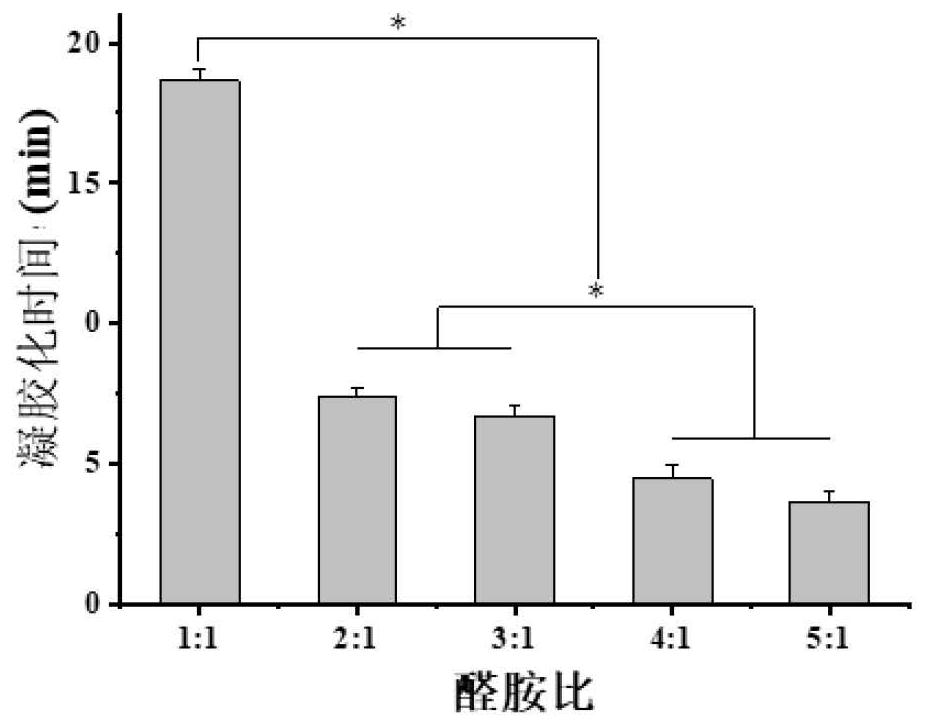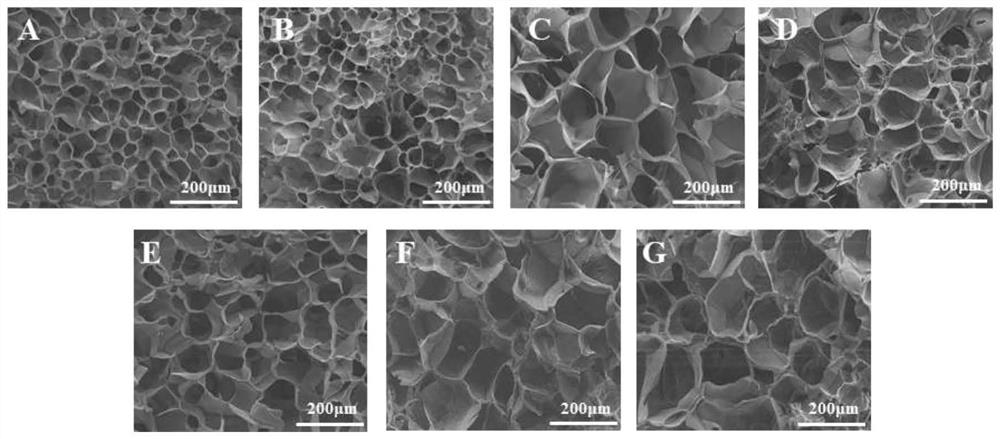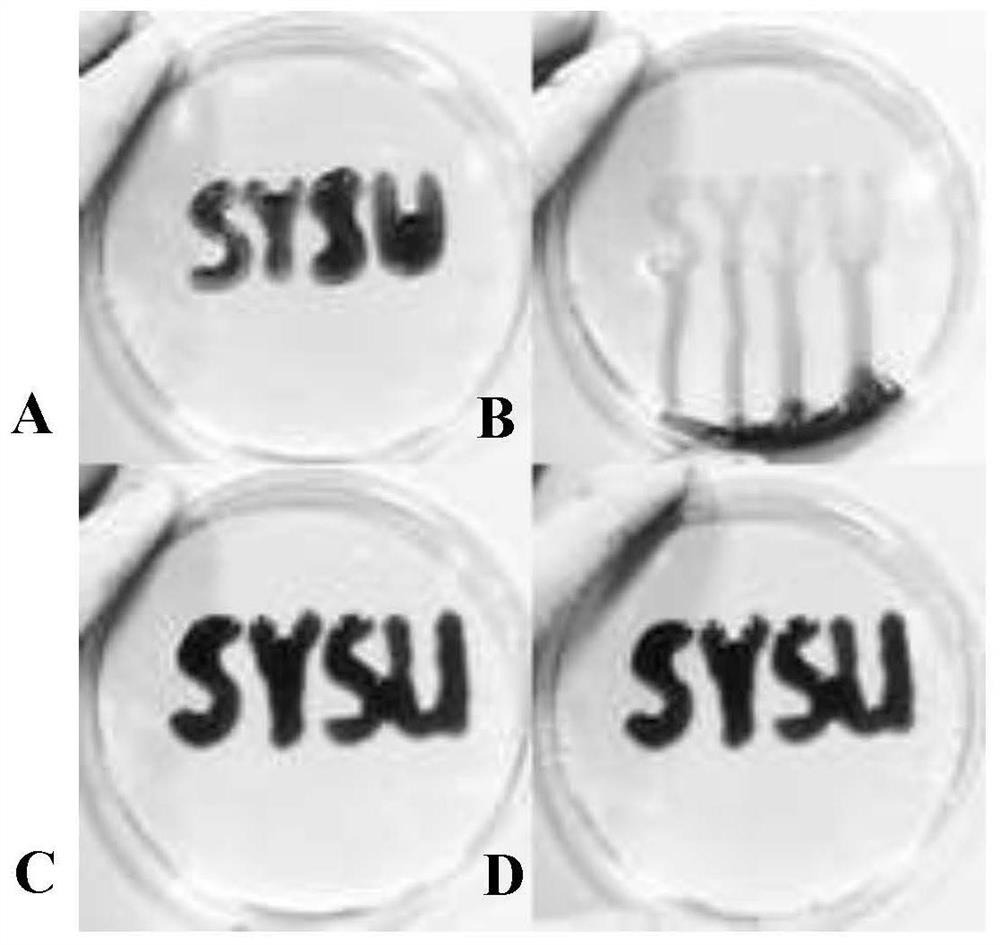Multi-crosslinking injectable hydrogel as well as preparation method and application thereof
A technology of multiple cross-linking and water injection, which is applied in the fields of pharmaceutical formula, medical science, prosthesis, etc., and can solve problems such as chronic inflammation and affecting the long-term success of implants
- Summary
- Abstract
- Description
- Claims
- Application Information
AI Technical Summary
Problems solved by technology
Method used
Image
Examples
Embodiment 1
[0079] (1) Synthesis of CG
[0080] The synthesis scheme of CG is shown in the following formula:
[0081]
[0082] The specific steps are:
[0083] Weigh 1g chitosan (95% degree of deacetylation, MW=10W) and add 50ml 0.1mol L -1 Dilute hydrochloric acid, stir until completely dissolved, add NaOH dropwise to adjust the pH to 5.5, make up deionized water to make the CS concentration 1%.
[0084] Accurately weigh 3 g of gallic acid and dissolve in 25 mL of ethanol, weigh 3.39 g of EDC and 2.04 g of NHS and dissolve in 25 mL of ethanol. After the solution was completely dissolved, the mixed solution of GA solution, EDC and NHS was slowly poured dropwise into the stirring chitosan solution, stirred and reacted at room temperature for 24 hours, and kept at pH=5.0 during the reaction.
[0085] The reaction solution was dialyzed in a dialysis bag with a molecular weight cut-off of 3500 in DDW with pH=5 for 48 hours, and the dialyzed solution was collected and filtered to remove...
Embodiment 2
[0096] Specifically, the scheme in Example 1 is used to prepare hydrogels with different CG contents and different aldehyde-amine ratios, and to study the superiority and feasibility of the physical and chemical properties of the hydrogel for its application by characterizing various properties.
[0097] (1) Gelation time
[0098] Hydrogel Preparation Protocol Example 1.
[0099] Prepare CG-Gel mixed solution, mix MASA-CuSO 4 Add the mixed solution dropwise to the CG-Gel mixed solution under stirring at 500r / s. After mixing evenly, adjust the stirring speed to 10r / s. Observe that the rotation of the stirring bar is restricted or record the gelation time when stirring is stopped.
[0100] The result is as figure 1 As shown, the gelation time of the hydrogel is negatively correlated with the ratio of aldehyde groups to amino groups in the system. When the aldehyde-amine ratio is controlled to be 2:1 or above, the gelation time of the hydrogel can be controlled within 8 minutes...
Embodiment 3
[0136] (1) Antioxidant properties of antibacterial active hydrogels
[0137] The DPPH and ABTS free radical scavenging ability of the hydrogel in Example 1 was explored by DPPH and ABTS free radical scavenging experiments, and the influence of its thickness on the scavenging ability was explored to evaluate its antioxidant performance.
[0138] The result is as Figure 11 It shows that the free radical scavenging ability of the hydrogel is related to the thickness, and the thickness of the hydrogel gradually decreases in the same volume of the 96-well plate, 48-well plate, and 24-well plate, and the scavenging efficiency gradually increases. When it was prepared in 96-well plate and 48-well plate, it was found that the free radical scavenging efficiency increased with the increase of CG concentration. The efficiency does not change significantly with the increase of CG concentration, and the highest clearance rate can reach about 46.6%.
[0139] In the ABTS experiment, such ...
PUM
| Property | Measurement | Unit |
|---|---|---|
| concentration | aaaaa | aaaaa |
| oxidation state | aaaaa | aaaaa |
Abstract
Description
Claims
Application Information
 Login to View More
Login to View More - R&D
- Intellectual Property
- Life Sciences
- Materials
- Tech Scout
- Unparalleled Data Quality
- Higher Quality Content
- 60% Fewer Hallucinations
Browse by: Latest US Patents, China's latest patents, Technical Efficacy Thesaurus, Application Domain, Technology Topic, Popular Technical Reports.
© 2025 PatSnap. All rights reserved.Legal|Privacy policy|Modern Slavery Act Transparency Statement|Sitemap|About US| Contact US: help@patsnap.com



